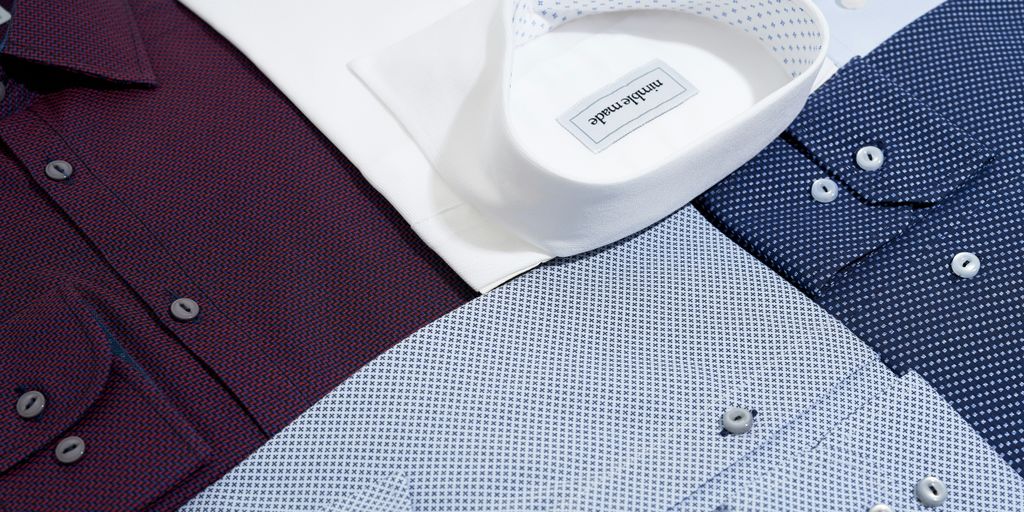
In today’s evolving work environment, dressing professionally remains a cornerstone of workplace etiquette, whether you’re in a physical office or on a video call. Modern office attire is shifting towards a balance of comfort and professionalism, making it essential to understand various dress codes and how to adapt to them. This guide offers practical tips for building a versatile, stylish, and functional professional wardrobe that boosts confidence and productivity.
Key Takeaways
- Understanding different office dress codes is crucial for fitting in and being respected professionally.
- Focus on comfort without compromising on a polished, professional look.
- Key wardrobe pieces can vary between men and women but should always include versatile items and accessories.
- Balancing comfort and professionalism is essential, especially with the rise of remote work.
- Avoid common office attire mistakes like dressing too casually or ignoring dress code guidelines.
Understanding Modern Office Dress Codes
In today’s work environment, understanding different types of business attire is crucial for making a positive impression and feeling comfortable and confident at work. Business attire can range from traditional business attire to casual dress codes, and it’s essential to adhere to your workplace’s specific dress code to fit in and be respected professionally.
Key Pieces for a Professional Wardrobe
Building a professional wardrobe is essential for making a great impression at work. Here are some must-have items to consider for both women and men, along with versatile accessories to complete your look.
Must-Have Items for Women
Your wardrobe needs these 4 must-haves according to a stylist: sheath dresses, pencil skirts, tailored blazers, and comfortable yet stylish shoes. These pieces form the foundation of a professional and polished look.
Essential Pieces for Men
For men, a well-fitted suit, dress shirts, and quality dress shoes are indispensable. Achieve timeless style with quality basics and versatile pieces. Don’t forget to include a few ties and a classic belt to complete your ensemble.
Versatile Accessories
Accessories can elevate your outfit. Consider adding belts, handbags, and minimalist jewelry to your collection. A stylist reveals essential accessories for upgrading outfits: belts, handbags, socks, and tights. These items can add a touch of sophistication and pull your look together.
A well-curated wardrobe not only enhances your professional image but also boosts your confidence. Invest in key pieces that offer both style and functionality.
Balancing Comfort and Professionalism
Choosing Comfortable Fabrics
Selecting the right fabrics is crucial for maintaining a balance between comfort and professionalism. Opt for breathable materials like cotton, linen, and blends that offer both comfort and a polished look. Avoid overly casual fabrics like jersey or fleece, which can appear unprofessional in a business setting.
Incorporating Functional Pieces
Functional pieces are essential for a professional wardrobe. Look for garments with practical features such as pockets, adjustable waists, and wrinkle-resistant fabrics. These elements can make your daily routine more efficient and comfortable. Aim for tailored garments that allow breathing room without sacrificing formality.
Footwear That Works All Day
Your choice of footwear can significantly impact your comfort and professionalism. Invest in high-quality shoes that provide support and are appropriate for your office environment. Consider options like loafers, low-heeled pumps, or dressy flats that can keep you comfortable throughout the day.
Balancing comfort and professionalism is about making smart choices in your wardrobe that allow you to feel good and look polished.
Seasonal Office Attire Tips
Dressing for Warmer Months
When the temperature rises, stay cool and professional with lightweight fabrics. Opt for breathable materials like cotton and linen to keep comfortable. Incorporate chic seasonal wear essentials for spring: blossoming into style. Embrace floral sundresses, pastels, and accessories for a fresh and vibrant spring wardrobe. Express individuality with timeless trends.
Layering for Cooler Weather
As the weather cools, layering becomes essential. Start with a base layer and add sweaters, blazers, or cardigans. Choose pieces that can be easily removed or added to adapt to changing temperatures throughout the day. This approach ensures you remain comfortable and stylish.
Adapting to Transitional Seasons
Transitional seasons can be tricky, but with the right approach, you can navigate them effortlessly. Mix and match pieces from your summer and winter wardrobes. For example, pair a summer dress with a cozy cardigan or a lightweight scarf. This strategy allows you to extend the use of your wardrobe and stay prepared for unpredictable weather.
Embrace the versatility of your wardrobe to stay stylish and comfortable year-round.
Styling Tips for Remote Work
When working remotely, it’s crucial to maintain a professional appearance during virtual meetings. Opt for clothing that looks neat and clean, avoiding anything overly casual or wrinkled. A well-fitted blouse, shirt, or sweater in solid colors or subtle patterns works best. Ensure your workspace has proper lighting to enhance your appearance on camera.
Remote work allows for more comfort, but it’s important to find a balance between comfort and professionalism. Invest in quality basics that are both comfortable and stylish. Embrace the power of layers to adapt to different temperatures throughout the day. Remember, dressing well can boost your confidence and productivity.
- Collared shirts or blouses: These are perfect for maintaining a professional look.
- Casual dresses or button-down shirts: Ideal for long calls or meetings.
- Comfortable pants or skirts: Ensure they are neat and wrinkle-free.
- Versatile accessories: Simple jewelry or a nice watch can add a touch of professionalism.
Dressing professionally is still a crucial part of the physical and digital workspace. Tailor your look to your work environment, clients, and occasion.
Common Office Attire Mistakes to Avoid

Navigating the world of office attire can be tricky, but avoiding common pitfalls can help you maintain a professional image. Steer clear of these mistakes to ensure you always look your best at work.
Conclusion
Navigating the evolving landscape of office attire can be challenging, but it’s clear that the focus has shifted towards comfort and practicality without sacrificing professionalism. As Jordan Solch suggests, deconstructed pieces that blend functionality with style are the way forward. Whether you’re in a traditional office setting or working remotely, dressing appropriately can boost your confidence, enhance teamwork, and drive productivity. By understanding and adhering to your workplace’s dress code, you can make a positive impression and feel comfortable in your professional environment. Remember, your attire is not just about following rules but also about expressing your personality and feeling good about yourself. So, embrace the modern trends, and let your office attire reflect both your professionalism and individuality.
Frequently Asked Questions
What is the difference between business casual and smart casual?
Business casual typically includes slacks or khakis, dress shirts or blouses, and closed-toe shoes. Smart casual allows for more flexibility, including neat jeans, casual blazers, and stylish but professional footwear.
Are sheath dresses and pencil skirts still appropriate for the office?
According to personal stylist Jordan Solch, sheath dresses and pencil skirts are becoming less common. The focus is now on comfort while maintaining a polished look, with deconstructed pieces that combine practicality and functionality.
How can I balance comfort and professionalism in my office attire?
Focus on choosing comfortable fabrics and functional pieces that still look polished. For example, opt for tailored pants with a bit of stretch, comfortable yet stylish shoes, and tops that allow for ease of movement.
What are some must-have items for a professional wardrobe?
For women, essential items include tailored pants, blouses, blazers, and versatile dresses. For men, key pieces include dress shirts, slacks, blazers, and a good pair of dress shoes. Accessories like belts, watches, and minimal jewelry can enhance any outfit.
How should I dress for remote work?
Even when working remotely, it’s important to maintain a professional appearance, especially for video calls. Opt for clean, well-fitting tops, and consider the background and lighting of your video setup. Balance comfort and style with pieces like smart casual shirts and comfortable pants.
What are some common office attire mistakes to avoid?
Avoid dressing too casually, even in a business-casual environment. Steer clear of flip-flops, overly worn jeans, and printed tees. Also, avoid clothes that are too revealing and overdoing accessories. Always adhere to your workplace’s specific dress code guidelines.






